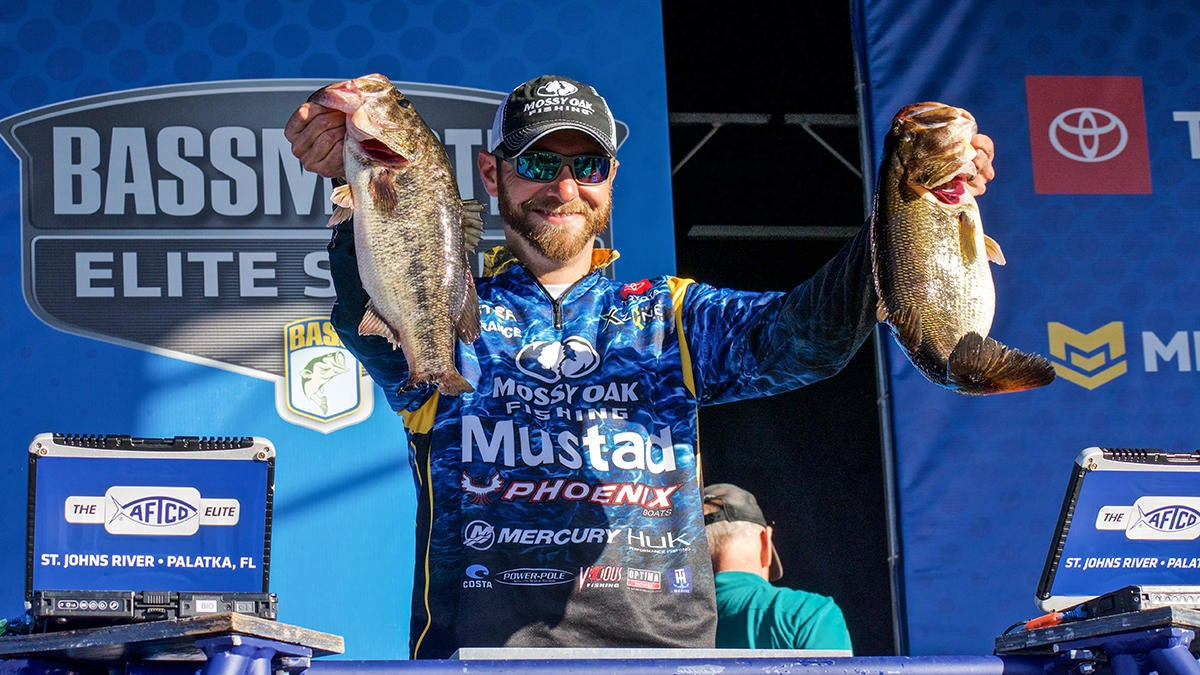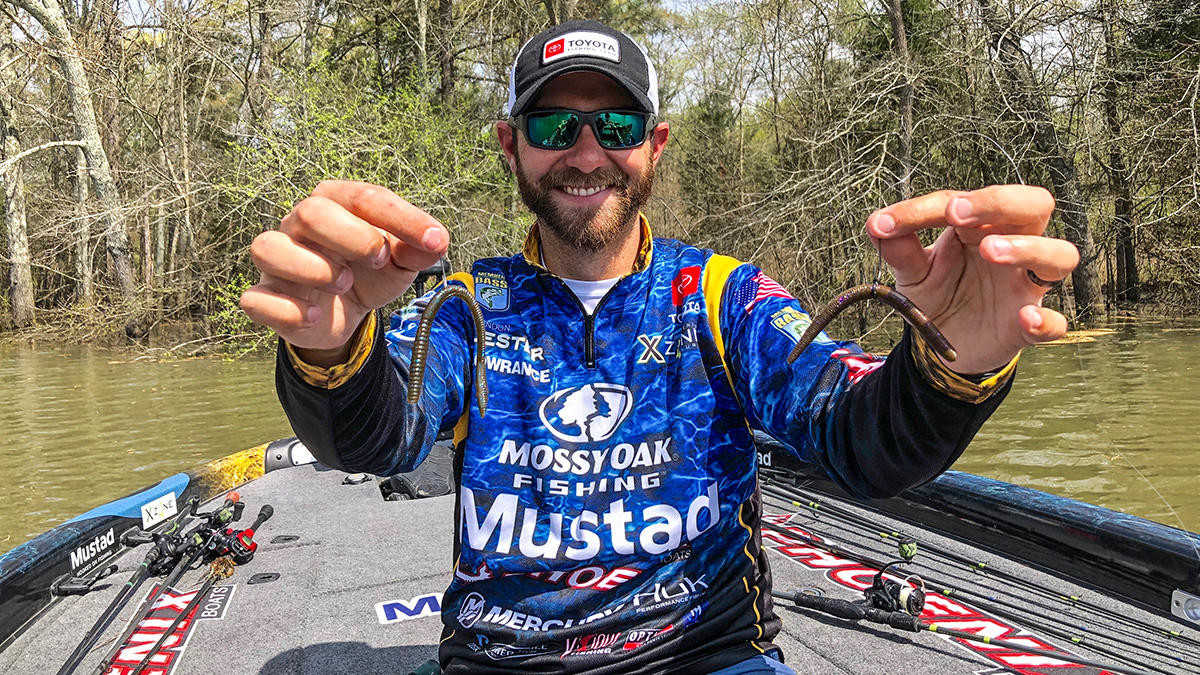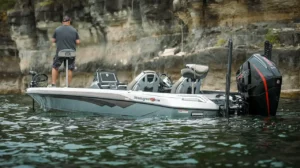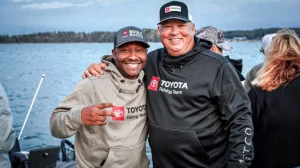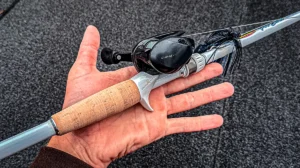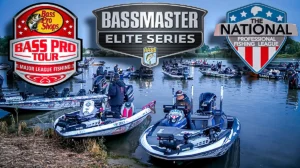Soft plastics catch a lot of bass when they migrate to shallow water to spawn each spring. As water temperatures steadily rise, bass leave their winter haunts and spend more time around shallower pieces of cover. This makes soft-plastic presentations more efficient and effective than traditional cold-water lures such as umbrella rigs or jerkbaits.
When it comes to choosing how you should rig your favorite soft plastic, which color you should throw or what hook and weight you’ll pair it with, there have never been more options for anglers than right now. This is certainly great news but it can also be a bit overwhelming. Professional angler Brandon Lester has carved out a living weighing these options and believes his three go-to soft plastic setups are a good starting point for anglers of all skill levels.
Neko-rigged finesse worm
Whether bass are spawning deep or fat prespawners are staging in five to 10 feet of water, a Neko-rigged X Zone Pro Series Deception Worm is Lester’s first choice. Historically, a lot of anglers opt for some kind of jig in this scenario, but Lester leans on this rig. He believes bass aren’t as used to seeing this presentation as they are a jig, Texas rig or shaky head.
“A Neko rig is perfect for targeting spring bass in a little deeper water,” Lester said. “When I find bass staging around secondary points or on the last steep bank in the back of a creek, a Neko rig is the first thing I pick up. I add a 1/16-ounce nail weight in the head of the worm and stick it on a No. 2 Mustad TitanX Wacky/Neko Rig Hook. Pitch it around docks, rocks or next to any wood cover you come across.”
While a Neko rig and a wacky rig have a lot of similarities, Lester looks at these setups as completely different tools in his tackle box. The depth of the area he is fishing is the distinguishing factor.
“Even though it’s lightweight, the added nail weight in a Neko rig causes your worm to sink head-first fairly quickly,” Lester said. “Allowing an angler to fish a wacky-rigged worm in deeper water without having the patience of a donkey. Your bait gets down to the fish quicker and you’ll get more casts in throughout a day of fishing. More casts equals more bass.”
Wacky-rigged stick worm
If Lester is targeting bass in water shallower than four feet, a 5-inch X Zone Lures Pro Series True Center Stick rigged wacky and weightless on the same hook is his primary soft-plastic setup. It’s no secret a wacky-rigged stick worm is a great way to accumulate a lot of bites for anglers of all skill levels, but Lester firmly believes something about a worm rigged wacky style around the spawn generates big bites, too.
“I’m not sure whether female bass think it’s a bluegill, crawfish or what but they absolutely hate the pulsing action of a wacky-rigged worm,” Lester said. “It always gets a lot of bites, but it will absolutely catch big ones in the springtime. That applies whether your worm is weightless or nail weighted. My guess is the longer that worm shakes and shimmies in their face, the madder those big girls get.”
Another reason Lester prefers a weightless wacky rig in super-shallow springtime scenarios is how easily the bait skips. Bass spend time underneath docks, walkways and overhanging limbs whether they are spawning or seeking shade. Lester can skip a weightless wacky rig into hard-to-reach places around these pieces of structure and put a bait in front of fish that would have otherwise been impossible to reach.
Whether it’s a weightless or nail-weighted wacky rig, using the proper hook is imperative and one thing Lester believes a lot of anglers overlook.
“Using the right hook is paramount with these presentations,” Lester explained. “I see a lot of guys get nervous about using a tiny hook but you really don’t have to be. In my opinion, the No. 2 Mustad TitanX Wacky/Neko Rig Hook is just about perfect. A large majority of the time, the bass will be hooked right in the top lip and as long as you let the fish tire themselves out, they aren’t coming off. But you have to be confident in your equipment.”
Texas-rigged creature bait
The third soft-plastic presentation Lester has at the ready on his front deck is a big Texas-rigged creature bait like a X Zone Pro Series Hawg Hunter. He prefers a beefy 5/0 Mustad Denny Brauer Grip-Pin Max Flippin’ Hook and a 1/4-ounce tungsten weight to round out this pitching and flipping setup.
A 1/4-ounce weight might sound a little light, but Lester doesn’t like going any heavier if he can help it. A lighter weight doesn’t overpower the action of a creature bait and he believes a slow fall is a good thing when bass are getting ready to spawn. This set up isn’t one Lester typically covers water with, but rather something he picks up to make a few pinpoint casts.
“I’ll pick this up if I come to a juicy-looking laydown or brush pile,” Lester said. “Something I think a bass could be relating to on their way in to spawn or when they are done and headed out. The more gnarly and isolated the cover is, the better. Big rod, big line and a hefty hook; it’s one of my favorite ways to catch ’em.”
Give these three soft-plastic setups from Team Toyota pro Brandon Lester a try this spring whether you’re new to bass fishing or you’re a well-seasoned veteran. Springtime means love is in the air for bass in your area and they are likely headed to shallow water. You should be, too and these three presentations will help you draw a few bites when you get there.


